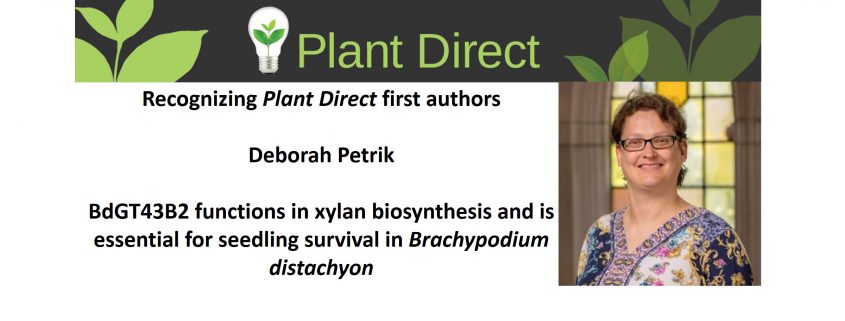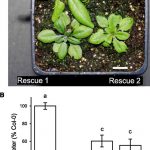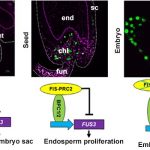Recognizing Plant Direct authors: Deborah Petrik
Deborah Petrik, first author of BdGT43B2 functions in xylan biosynthesis and is essential for seedling survival in Brachypodium distachyon
Current Position: Visiting Assistant Professor of Biology, Rhodes College, Memphis, TN
Education:
PhD in Biological Sciences, Illinois State University, 2015
M.S. in Agronomy, University of Illinois, 1996
B.S. in Agricultural Sciences, University of Illinois, 1994
Non-Scientific Interests: Foraging for wild edibles, hiking and fishing for relaxation
Brief bio: Dr. Petrik received her Bachelor’s and Master’s of Science degrees from University of Illinois in 1994 and 1996 respectively, studying plant molecular biology within the College of Agriculture (now ACES). She went on to work in the agricultural biotech private sector for 12.5 years, before returning to academia to obtain her PhD in Biological Sciences from Illinois State University in 2015. Her research in the lab or Dr. John Sedbrook, as part of the Great Lakes Bioenergy Research Center, focused on characterizing the the in vivo function of the Brachypodium distachyon ortholog of PMT, a grass specific lignin p-coumaroyl-CoA methyltransferase. This work was capitalizing on the initial discovery of this enzyme in rice using a bioinformatic approach, followed by its expression and in vitro biochemical characterization performed by Saunia Withers, at the time performing research at Michigan State University in the lab of Dr. Curtis Wilkerson. Dr. Petrik went on to perform post-doctoral research at Penn State University in the lab of Dr. Charles T. Anderson, researching grass specific biological functions of xylan biosynthesis and modification during development. During this time, Dr. Petrik also served as a post-doctoral researcher/educator (PDR/E), which allowed her to obtain her current position as a Visiting Professor of Biology, specializing in Molecular Biology, at Rhodes College in Memphis, Tennessee. Dr. Petrik is also author of a recently accepted and soon to be published Springer protocol chapter on the use of multiplexing CRISPR/Cas9 technology in Brachypodium distachyon.




